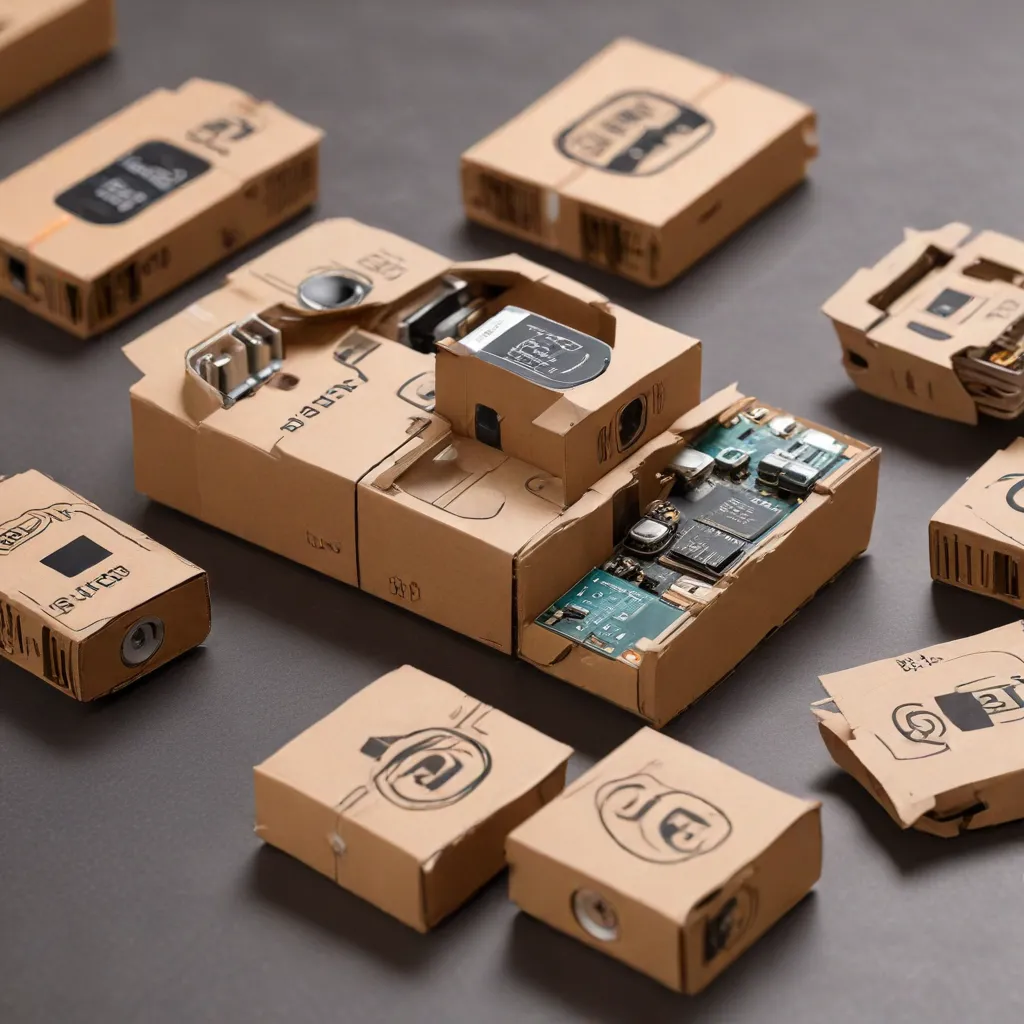
Sustainable Power for the Digital Transformation
The rise of the Internet of Things (IoT) has ushered in a new era of digitalization, transforming various industries and sectors. As sensors and connected devices proliferate, the need for portable, high-performance power sources has become increasingly critical. However, the traditional battery landscape poses significant environmental and ethical challenges that hinder the widespread adoption of sustainable IoT solutions.
Overcoming the Environmental Impact of Batteries
The societal dependence on electronics is expected to worsen with the rise of IoT. While IoT is considered a primary enabler of the next digital transformation, it also brings with it a growing demand for portable power sources. Conventional battery technologies, such as Zn, Li-ion, or alkaline cells, still rely on hazardous and non-sustainable compounds, including heavy metals and toxic chemicals. These materials can be highly detrimental to ecosystems if mismanaged during the operational lifespan or at the end of life.
The environmental impact of battery waste is a pressing concern, with low recycling rates despite considerable policy efforts. In the EU, the collection rate for portable batteries was only 47% in 2020, far below the ambitious targets set by the new Batteries Regulation (2023/1542). This regulation aims to reduce the carbon footprint of battery manufacturing, improve the ethical sourcing of raw materials, and enhance the security of supply.
The need for a sustainable solution becomes even more critical in sectors undergoing deep transformations, such as the packaging industry. As smart packaging solutions incorporating IoT systems become more prevalent, the demand for advanced, single-use batteries has grown. However, conventional primary battery technologies have not experienced significant innovations in recent decades, resulting in a concerning dissociation between the application’s energy requirements and the energy stored in the battery.
Introducing a Designed-by-Purpose Power Source
In this context, we present a novel power source concept designed specifically for smart packaging applications. This primary battery has been engineered with sustainability in mind from the early development stage, aiming to minimize the environmental impact throughout its life cycle.
Prioritizing Renewable and Non-Toxic Materials
The battery’s material selection prioritizes naturally abundant and non-toxic compounds, actively avoiding the use of hazardous or controversial substances. Cellulose derivatives and alginate biopolymers are prioritized for the separator and to contain the redox species, following the value chain of paper and cardboard.
By employing renewable and water-based materials, the battery prototype avoids the use of critical raw materials, heavy metals, and petroleum-based polymers that are commonly found in conventional battery technologies. This approach aligns with the EU Chemicals Strategy for Sustainability and ensures the power source’s harmlessness in case of any damage or leakage.
Seamless Integration with Packaging Processes
The battery’s design and manufacturing methods have been carefully considered to enable seamless integration into standard packaging protocols. The prototype features a label-like, rectangular structure composed of layered components, including current collectors fabricated using the laser-induced graphene (LIG) technique.
LIG is a versatile process that combines 3D graphene preparation and patterning in a single step, making it well-suited for implementation in packaging industry workflows. The team has optimized the LIG process for various precursor materials, including cardboard, to produce conductive and patterned current collectors.
Additionally, the hydrogel-based electrolyte matrix is designed for easy implementation using low-energy-demanding solvent casting methods, further facilitating the battery’s integration into roll-to-roll packaging production lines.
Enabling Sustainable End-of-Life Management
A crucial aspect of the battery’s design is its compatibility with paper and cardboard recycling processes. By following the value chain of these materials, from sourcing to disposability, the power source can be directly repurposed within the well-established waste streams of the packaging industry.
The team has assessed the battery’s end-of-life compatibility with standardized paper and cardboard recycling protocols, ensuring that the prototype’s integration does not disturb the common industrial processes. This approach overcomes the need for separate collection and treatment routes, which typically rely on end-consumer responsibility and pose significant environmental challenges.
Practical Applications and Energy Adaptation Capability
The battery prototype’s energy adaptation capability has been demonstrated by directly powering two applications particularly appealing for smart packaging: a printed electrochromic display and a wireless tracker device.
The electrochromic display, a cost-effective and ultra-low-power technology, is becoming a new standard for increasing visibility and transparency in various packaging applications, such as cold chain and logistics monitoring. The battery was able to reliably power the display, seamlessly transitioning between ON and OFF states.
For the wireless tracker device, the battery prototype was able to fully charge the device’s capacitor, power the start-up sequence, and maintain the tracker’s idle mode and smartphone communication capabilities. This demonstration showcases the battery’s ability to adapt to different energy requirements within the smart packaging ecosystem.
Towards a Sustainable Digitalization
The reconceptualization of the entire battery life cycle, from material selection to end-of-life management, has led to the generation of a disruptive power source concept. This designed-by-purpose approach aims to be an enabler of a sustainable digitalization, addressing the environmental and ethical concerns associated with conventional battery technologies.
By aligning the power source’s design with the packaging industry’s value chain and waste management processes, this solution promises to facilitate the widespread adoption of efficient and environmentally conscious IoT applications. As the technology matures, further studies and comprehensive sustainability assessments will be crucial to quantify the environmental and economic benefits of this innovative approach.
The journey towards a sustainable digitalization requires a fundamental rethinking of energy storage solutions. This work showcases how a holistic, application-tailored design can unlock new possibilities for IoT power sources that are not only high-performing but also ecologically conscious. By prioritizing sustainability from the ground up, this battery prototype represents a significant stride towards a more sustainable future for the digital transformation.












